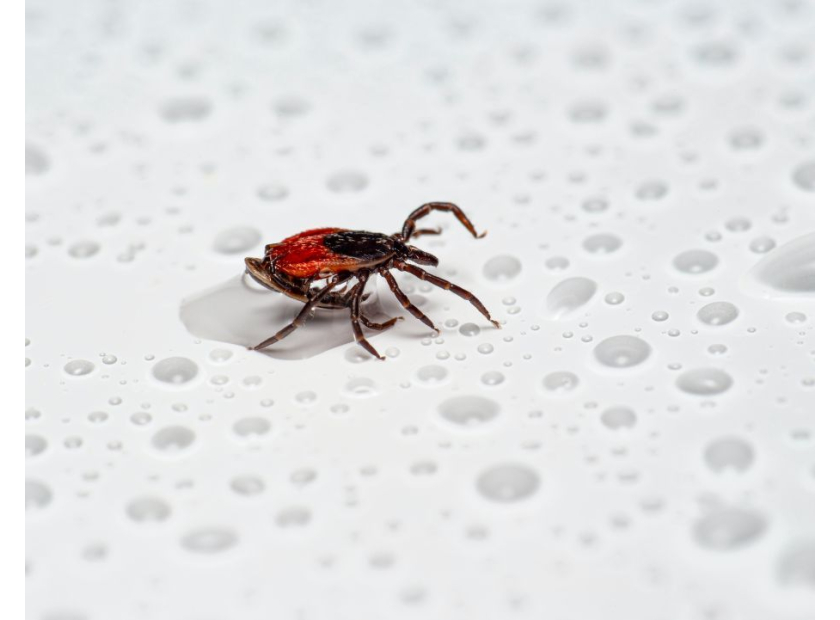Lyme Disease: Why it's so difficult to treat?
Lyme disease is one of the most common types of tick-borne diseases (TBDs), yet many questions remain surrounding long-term treatment of this disease. Borrelia burgdorferi, the spirochete causing the disease, is transmitted to humans through the bite of an infected Ixodes tick. (1) The first symptoms will often include a bullseye rash forming around the tick bite, as seen in the photo to the left. Approximately 35,000 cases are reported to the CDC annually, however, the CDC believes this number is severely underreported and estimates the actual number of cases to be closer to 476,000. (2)
Early detection can be difficult because of the low concentrations of bacteria present in a patient’s blood sample, frequently yielding false negatives.(3) Additionally, TBD testing is pathogen-specific, meaning a specific test must be ordered by a clinician who suspects a TBD. This makes the diagnosis heavily reliant on the clinical picture. (3) The gold standard for testing has been a two-tiered system including an ELISA test followed by a Western blot test, as recommended by the CDC. (3) However, this testing method is very time consuming and is more accurate the longer the patient has had the disease.(3)
Lyme disease initially causes symptoms that mimic common illnesses such as the flu, making it difficult to diagnose, especially in regions where TBDs are uncommon. (3) Initial symptoms are treated with a cocktail of oral antibiotics including doxycycline, amoxicillin, or cefuroxime. (4) Patients left untreated may experience persistent symptoms such as facial palsy, joint and muscle pain, and cognitive impairment. (5) The puzzling question researchers face is what causes these persistent symptoms in many Lyme disease patients?
B. burgdorferi has evolved many adaptations that have allowed it to persist within its host’s tissues, whether it be animal, tick, or human host. These adaptations have also allowed it to survive harsh antibiotic treatments as well. In vitro studies have demonstrated that when treated with antibiotics, a small number of B. burgdorferi survive but are non-cultivable.(4) The spirochete alters its gene expression, allowing it to transform into a variety of shapes and remain dormant during an attack by antibiotics. (4) While researchers have yet to demonstrate this in vivo, these studies may suggest why many patients’ symptoms resurge and persist after initial diagnosis and seemingly successful treatment. (4)
Research progression has been slow, mostly attributed to the lack of public awareness and concerns surrounding Lyme disease and other TBDs. The number of cases also falsely appears to be relatively small, which translates to less funding and investments for new technologies and detection methods.(3) It is also a difficult bacterium to study, since it requires a complex growth medium and takes two to four weeks of incubation.(8) A critical advancement would be a readily available detection method that tests for multiple TBDs simultaneously. (3) The Far Clinic has produced an excellent video that explains how B. burgdorferi can evade detection by the immune system and develop resistance to antibiotics.(9)
Understanding long-term treatment is essential due to the growing concern of the geographical expansion of ticks as well as the increased prevalence of TBDs such as Powassan virus.(6) According to the CDC, the Powassan virus is very rare, but the reported number of cases has increased in recent years from only six cases reported in 2015 to 39 cases reported in 2019. (7) Time-consuming test methods that yield false negatives at early stages of disease beg for more specific and sensitive technologies. As warmer temperatures have allowed ticks to survive in areas they previously could not, public education is key to preventing misdiagnosis and treating TBDs in their early stages.
References: 1, 2, 3, 4, 5, 6, 7, 8, 9
By Allie Malmberg
Technical Support Microbiologist HARDY DIAGNOSTICS
Meet the author

LEAD TECHNICAL SUPPORT SPECIALIST at HARDY DIAGNOSTICS
Allie Malmberg, B.S. Cellular and Molecular Biology
While finishing her last quarter to earn her B.S in Cellular and Molecular Biology at Cal Poly San Luis Obispo, Allie began working for Hardy Diagnostics as a Technical Services Microbiologist. Today she leads a team of scientists who are passionate in supporting our cusotmers and providing the Culture of Service that Hardy is known for. After work you can find Allie taking a yoga or pilates class, listening to an audiobook, or planning her next international adventure.







